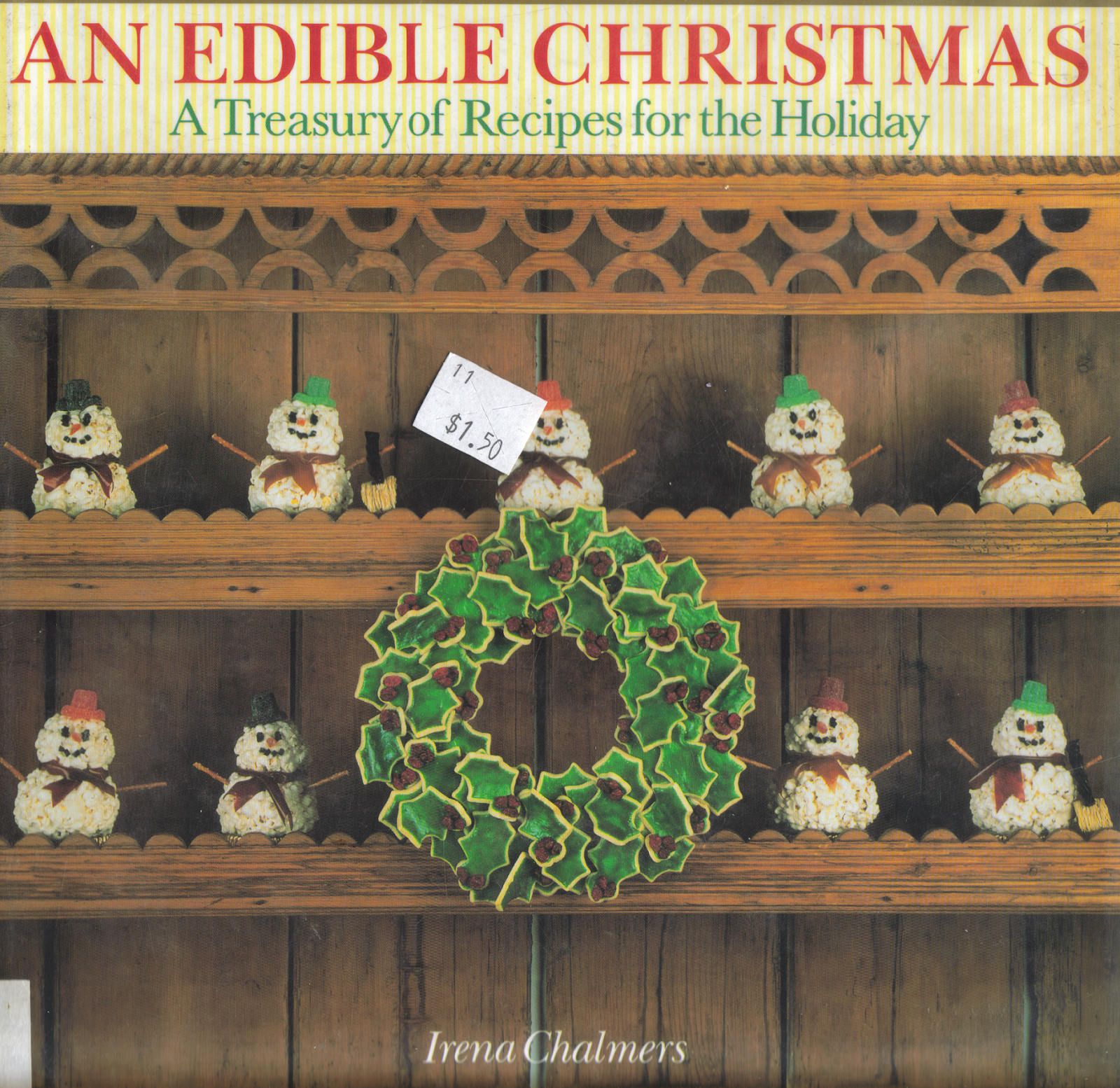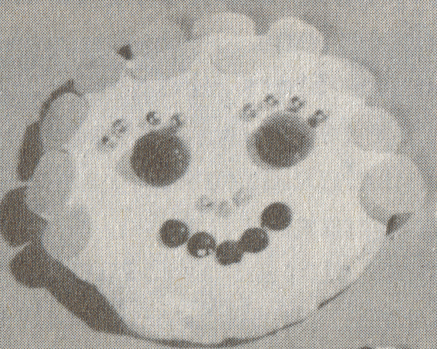I think the clearance sticker adds to the ambiance of Ernest Matthew Mickler's 1986 White Trash Cooking. The cover is loaded with images of the types of ingredients in the recipes. I see representations of Crisco, Hellman's mayonnaise, Sunshine [soda] crackers, Quaker oats, Arm & Hammer baking soda, Martha White self-rising flour, Borden, Aunt Jemima, Uncle Ben, Ritz crackers, Tabasco sauce, and Velveeta, to name a few, all against backgrounds of beans and greens.
So for our obligatory New Year's recipe, here's Hoppin' John:
This has those ultra-specific instructions that I love so much: "Some folks put in tomatoes and some put in okra." Apparently readers can too, but figuring out the logistics is up to them. They better know what they're doing or figure it out! I didn't know that the type of peas was negotiable, but black-eyed peas could be traded out too, and the result would still be Hoppin' John.
The informality carries throughout the book. Sometimes it's in the title:
What makes this a "single boy's breakfast"? I'm hoping that a pound of pork sausage mixed with a box and a half of soda crackers is more than a single serving, especially if it's accompanied by fried sweet potatoes! Maybe this is supposed to be enough for a week so the single boy won't have to cook again for a while? Maybe the recipe writers figure single boys won't have much on hand besides pork and crackers? It's fun just to look at the title and invent a back story.
This recipe also highlights an ingredient that runs throughout the book: soda crackers. They show up everywhere, even in recipes whose titles would seem to exclude such a possibility:
This "recipe" for cornbread in a glass ("Pour buttermilk in a big ice-tea glass filled with toasted cornbread") manages to include a "sweet milk and soda crackers" variation in its three sentences! That is efficiency.
Soda crackers aren't always so shy, though:
This recipe has no pretensions. It's not a mock apple pie that tries to hide its Ritzy beginnings with a deceptive title. This is straightforwardly soda cracker pie. It's not trying to fool anyone into thinking it is anything other than soda crackers dressed up for dessert with brown sugar, dates, and nuts.
Whether your new year is full of hoppin' john and soda crackers, herring with apples, or plaid and table-side grilling, have a good one!
Programming notes: My new teaching schedule will mean two posts per week: one on weekends, and one on Wednesdays, starting next week. (Wednesdays may still be Cookbook Wednesdays, but they will generally be from the '70s or earlier.)
This post is part of Louise's Cookbook Wednesday for Months of Edible Celebrations.






























































